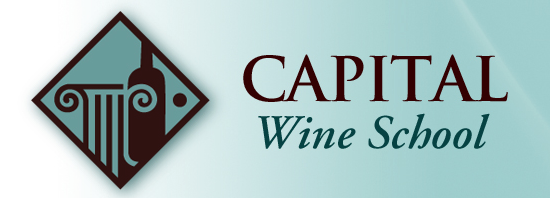I attended a tasting of Lombardy’s version of bubbly from Franciacorta. The tasting was held at the Capital Wine School and conducted by Michael Franz, a local wine writer, educator and consultant.

Readers may recall that I have tasted sparkling wines from Franciacorta in the past as part of a Taste of Lombardy event in DC. However, this particular tasting focused exclusively on Franciacorta. So what did I think? Well, I’ll first provide some background about Franciacorta and the wines that is produces. Franciacorta is located in northern Italian region of Lombardy; in particular, in the foothills of the Alps. Still wines have been made in this region since the 1500s; sparkling wines, though, have been produced within the past 50 years. Franciacorta sparkling wines are produced from Chardonnay, Pinot Noir, and Pinot Bianco. The styles range from Saten (blanc de blanc), Rose, Vintage, and Reserve. In Virginia, reserve wines are those that the wine maker deems to be deserving of the reserve label. In Italy, though, it is not that simple. Italian laws dictate which wines can classified as reserve wines, and in Franciacorta, reserve wines (labeled Riserva) are those that stay “on its lees for a minimum of 60 months.”
So what did we taste, and what did I like? We sampled five sparkling wines from Franciacorta, and they included the Ricci Curbastro Saten 2007 ($40), Bellavista Cuvee Brut ($40), Ricci Curbastro Brut ($36) Montenisa Brut Rose ($38), and Bellavista Grand Cuvee Rose 2007 ($65). The Saten was described as a consumer category wine and one that would appeal to an American market. I would compare it to the least favorites of the Virginia sparkling tasting—very fruity with limited acidity and a few bubbles. It suggested sweetness, and I thought of Sunday brunch at a non-descript café. However, the NV Bellavista Cuvee Brut stepped forward to show off what this region can produce. This one spent seven months on oak and was crafted from grapes of several vintages. Fruit elements were more delicate and nuanced; yeasty notes, a firmer mid-palate structure, and bright acidity resulted in a more classic sparkling wine. Exceeding this one was the Bellavista Grand Cuvee Rose 2007, reserve made from both Chardonnay and Pinot Noir. Recall the definition of reserva—it stayed on the lees for a minimum of 60 months; more finesse and better balance were my top descriptors. Not to be outdone, though, was the Montenisa Brut Rose with its strawberry aromas, bready notes, and refreshing acidity. The Ricci Curbastro Brut rated above the Saten but below the other three sparkling wines.
So its NYE and I have a house full of guests. Which Franciacorta sparkling wine do I chill? For $40 it was tough to beat the Bellavista Cuvee Brut. Let’s say it’s a tenth year anniversary or some other very special occasion; then I would vote for the Bellavista Grand Cuvee Rose. At $65, it was on par with Champagne wines (and perhaps a few bucks less.)
This was certainly a nice, intimate tasting with a handful of industry folks who were far more knowledgeable than I. Michael Franz was indeed the expert on the Franciacorta region; in fact, he explained that global warming might be playing a role in that region’s ability to produce quality sparkling wines. This phenomenon has been observed in Champagne, and Franciacorta may be on the verge of adjusting its regulations on where grapes intended for sparkling wines can produced. Franciacorta sparklings are now made from the region’s cooler climates; however, there is a concern that warmer temperatures at these altitudes may produce flabbier wines; therefore, new regulations may require that these grapes be grown at a higher altitude. (Climate change and the impact on wine regions is itself a fascinating topic.)
I also had the pleasure of meeting Jay Youmans, the master sommelier who has revolutionized the judging at the Virginia Governor’s Cup. He is the managing director of the Capital Wine School in Washington DC; in particular, it is near the Friendship Heights Metro. The school offers a number of courses that range from winetasting 101 to master-level, and I may just check out some of these courses for my own enrichment.
Conduct your own tasting of sparkling wines and toss in some samples from Virginia and Italy. Can’t find them at the local wine shop? Ask the manager to stock them. Want to know more about wine tasting? Take a class at the Capital Wine School. Of course, mention that Virginia Wine Time sent you.